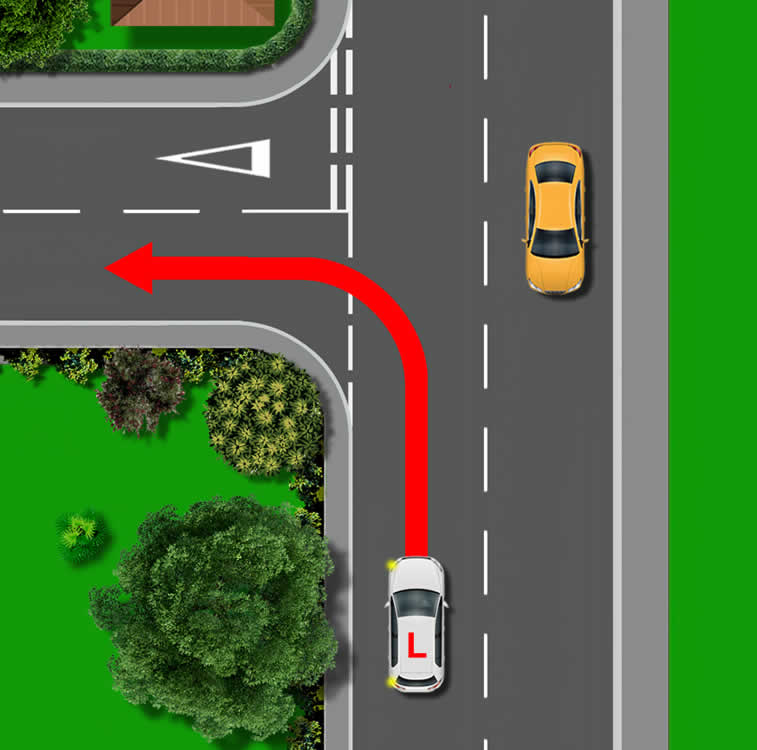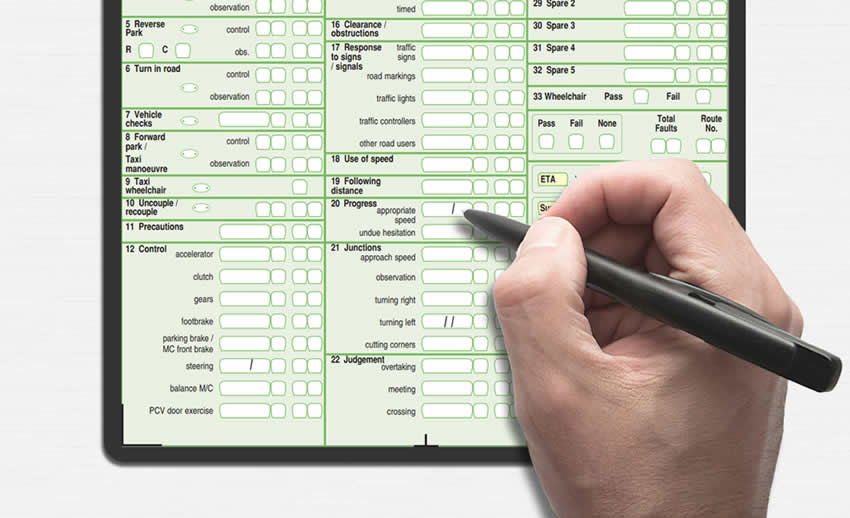A left turn is when you’ll be turning left from a major road into a minor road, otherwise known as a side road. This could be from a high speed major road, into a side road with a lower speed limit, or from a urban road, making a left turn and dealing with all the hazards associated with a busy environment.

Making a Left Turn and the Driving Test Report Sheet
On the driving test report, the long wide box is where the examiner may strike off ‘minor’ faults (they just call them faults now). The box with the ‘S’ stands for serious and the box with the ‘D’ stands for dangerous. Just one strike anywhere on the form in a serious or dangerous box will be a test fail. Though you can receive up to a maximum of 15 minor faults and still pass, if you accumulate several within the same category (even less than 15), you still may fail.
When making a left turn, there are several categories where faults may occur on the driving test report sheet. These can include:
- 12: Control
- 14: Use of mirrors / rear observation
- 15: Signals
- 16: Clearance / obstructions
- 18: Use of speed
- 20: Progress
- 21: Junctions
- 22: Judgement
- 23: Positioning
- 26: Awareness / planning
What is the Examiner Checking When Making a Left Turn?
When making a left turn, the examiner will assessing your ability for:
- Safety of yourself, passenger, other road users and pedestrians
- Control of the vehicle
- Effective observations
- Effective use of signals
- Anticipation and planning
Common Driving Test Faults When Making a Left Turn
Some of the common faults associated with making a left turn are:
- The correct use of mirrors as you approach the turn. You should be using the MSPSL routine and act accordingly to any potential hazards your see in your mirrors. This may also include chekcing the blind spot where necessary.
- To signal in good time, but not forgetting to cancel your signal once the turn is completed.
- To position your vehicle appropriately for the type of left turn you intend on taking. See best road position for making a left turn.
- The correct use of speed. Many test candidates fail due to approaching a junction too quickly. See what speed should you make a left turn?
- In terms of controls (12), a common fault is due to the steering. This may include taking the left turn too wide ending up on the opposite side of the road, or turning too soon and hitting the kerb.
- Anticipation / awareness / planning can include a failure to consider the potential hazards that may occur before taking the left turn.
- Once your have made the left turn, you may have to deal with passing parked cars. Ensure that you provide a safe distance between yourself and the parked vehicles (16: Clearance / obstructions). You’ll also need to judge the correct time to overtake the parked vehicle (22: Judgement) if there are approaching vehicles.
